Key Takeaways
FRP sculptures, crafted from fiber-reinforced plastic, blend innovation with tradition by mimicking bronze aesthetics while addressing practical limitations. These artworks weigh up to 70% less than bronze equivalents, enabling installation in spaces where heavy materials are impractical, such as rooftop gardens or historic buildings. A Fiberglass sculpture achieves this through layered fiberglass fabric and resin, creating a hollow core that retains structural integrity.
| Feature | FRP Sculptures | Bronze Sculptures |
|---|---|---|
| Weight | 15-30 lbs/ft³ | 50-70 lbs/ft³ |
| Weather Resistance | High | Moderate |
| Maintenance | Low | High |
| Cost Efficiency | 40-60% savings | Traditional pricing |
"FRP's adaptability allows artists to experiment with textures and scales unachievable in bronze," notes public art curator Elena Torres.
Their touch-friendly surface—free from sharp edges or temperature extremes—makes FRP ideal for interactive museum displays. Hotels leverage this material for large lobby installations, as its lightweight nature simplifies ceiling suspensions without structural reinforcements. While bronze develops a patina over time, FRP maintains its finish with occasional washing, reducing long-term preservation costs.
Tip: For outdoor FRP pieces, apply UV-resistant sealants annually to prevent color fading from sun exposure.
This material revolution extends bronze’s legacy into modern design, merging timeless visual appeal with 21st-century engineering solutions.

FRP Sculptures vs Bronze Compared
When evaluating sculptural materials, FRP (fiber-reinforced plastic) and bronze present distinct advantages shaped by their physical properties and modern demands. Bronze, a traditional alloy, has long been prized for its timeless aesthetic and historical significance. However, FRP sculptures challenge this legacy through innovations in material science. Unlike bronze, which can weigh hundreds of pounds even in modest sizes, FRP’s lightweight nature simplifies installation and reduces structural strain—a critical factor for rooftop gardens, hotel lobbies, or public spaces with weight restrictions.
Durability also diverges sharply. While bronze develops a protective patina over time, it remains vulnerable to environmental corrosion and requires periodic maintenance. FRP, conversely, resists moisture, UV damage, and temperature fluctuations, making it ideal for both indoor galleries and outdoor installations. Cost efficiency further tilts the balance: FRP production avoids the expensive casting processes of bronze, allowing artists and institutions to replicate intricate details at a fraction of the price.
Aesthetic flexibility is another key distinction. Modern FRP techniques can mimic bronze’s metallic finish so convincingly that casual observers often struggle to differentiate the two. This adaptability extends to tactile experiences—FRP surfaces can be engineered for smoother, safer interactions, a priority in Stainless steel sculpture-adjacent design trends emphasizing user engagement. While bronze retains cultural gravitas, FRP’s blend of practicality and artistic fidelity positions it as a transformative option for contemporary spaces.
Lightweight FRP Art Revolution
The shift toward fiber-reinforced polymer (https://en.artmovr.com/) designs that mimic bronze’s texture without compromising structural integrity.
Beyond practicality, the lightweight nature of FRP reduces transportation costs and logistical challenges, making it a preferred choice for public art projects and temporary exhibitions. For instance, urban installations requiring frequent relocation benefit from FRP’s durability and ease of handling. Additionally, the material’s resistance to corrosion ensures longevity in outdoor settings, further aligning it with modern sustainability goals. As industries prioritize efficiency without sacrificing aesthetics, FRP emerges as a bridge between classical artistry and contemporary engineering demands.

Durable Fiber-Reinforced Plastic Statues
Unlike traditional bronze, fiber-reinforced plastic (FRP) sculptures redefine durability through advanced material science. Composed of layered fiberglass mesh embedded in resin, these statues withstand environmental stressors—such as humidity, temperature fluctuations, and UV exposure—without corroding or developing patina. Their structural integrity remains intact even in coastal areas or urban settings prone to pollution, making them ideal for long-term outdoor installations. This resilience stems from the composite’s non-porous surface, which resists water absorption and microbial growth.
While bronze statues require frequent maintenance to prevent tarnishing, FRP sculptures retain their appearance with minimal upkeep. A protective gel coat layer acts as a barrier against scratches and fading, ensuring vibrant colors and sharp details for decades. This combination of low maintenance and high endurance has led to their adoption in high-traffic spaces, including theme parks and public plazas. For instance, IP character sculptures in entertainment venues leverage FRP’s durability to endure constant interaction while maintaining aesthetic precision. From monumental public art to intricate architectural accents, FRP’s adaptability ensures it meets both functional and artistic demands without compromising longevity.
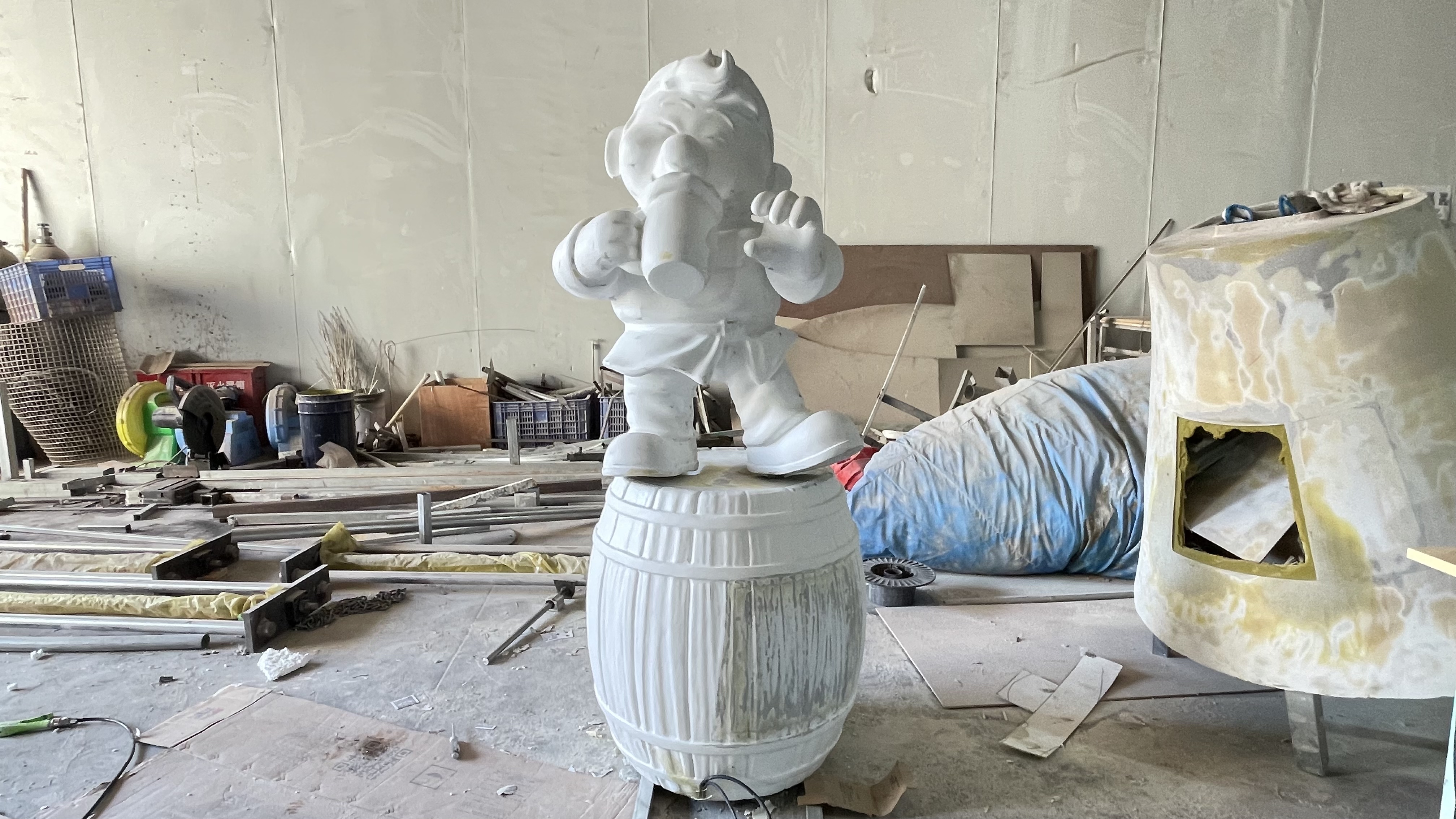
Touch-Friendly Museum Sculptures Explained
Museums increasingly favor FRP sculptures for interactive exhibits due to their unique tactile advantages. Unlike traditional bronze, which develops a patina that discourages physical contact, FRP’s smooth resin surface remains consistent under frequent handling. This material’s non-reactive properties prevent corrosion from skin oils or environmental humidity, making it ideal for hands-on displays. For example, kinetic sculptures requiring visitor interaction benefit from FRP’s durability, as repeated motion won’t degrade the structure.
The lightweight nature of fiber-reinforced plastic allows curators to install large, intricate pieces in high-traffic areas without structural concerns. Additionally, FRP can be molded with textured finishes that mimic bronze’s aesthetic while avoiding sharp edges or temperature extremes—common issues with metal artworks. Children’s museums, in particular, leverage these features for educational installations where touch is integral to learning. By blending safety with artistic precision, FRP sculptures redefine how audiences engage with three-dimensional art, aligning with modern demands for accessible, immersive cultural experiences.
FRP in Hotels: Decorative Applications
The integration of FRP sculptures in hotel design highlights their versatility in blending artistic expression with functional design. Unlike traditional bronze, FRP’s lightweight nature allows for large-scale installations in lobbies, courtyards, or rooftop gardens without requiring structural reinforcements. Hotels increasingly favor these sculptures for thematic environments—such as tropical resorts using lifelike botanical motifs or urban boutique spaces featuring abstract geometric forms. The material’s adaptability supports intricate detailing, enabling designs that range from classical elegance to playful Cartoon sculpture creations for family-friendly venues.
Durability further enhances FRP’s appeal in high-traffic areas. Resistant to humidity, temperature fluctuations, and accidental impacts, these sculptures maintain their appearance in indoor atriums or outdoor poolsides with minimal upkeep. Additionally, their smooth, non-corrosive surfaces ensure safety for guests, eliminating sharp edges or toxic patinas. By combining aesthetic flexibility with practical benefits, FRP sculptures redefine hospitality spaces as immersive art experiences while aligning with modern design priorities like cost efficiency and sustainability.
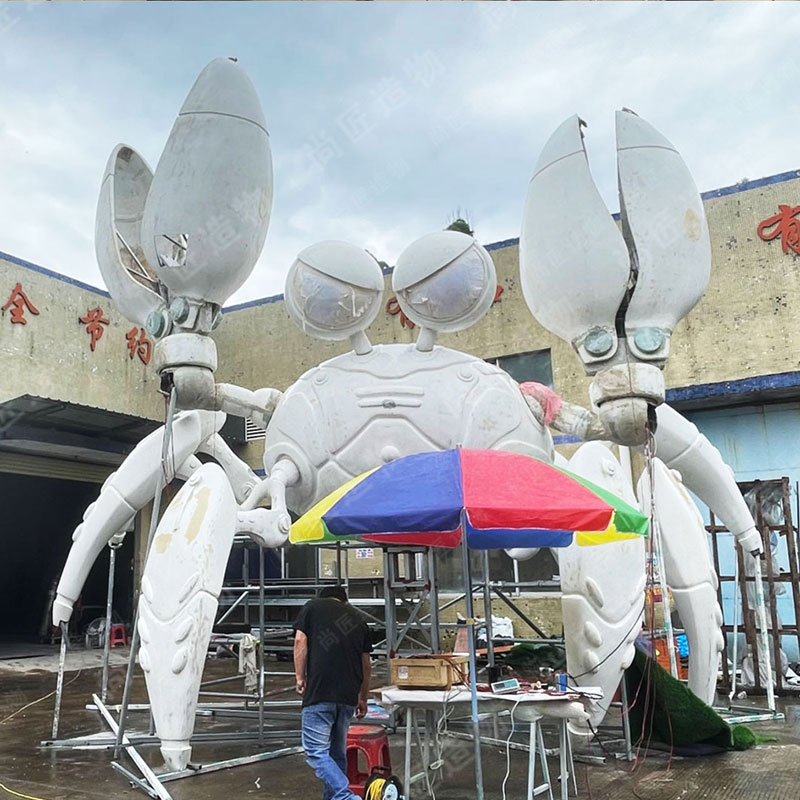
Sculpture Resin Composition and Crafting
FRP sculptures derive their structural integrity from a carefully engineered blend of materials. The core composition typically includes polyester or epoxy resin reinforced with layers of fiberglass matting. This combination creates a composite material that balances flexibility and strength, allowing artists to achieve intricate designs without the weight limitations of traditional bronze. The process begins with a mold, often crafted from clay or 3D-printed prototypes, which is coated with a release agent to prevent adhesion.
Layers of resin-saturated fiberglass are then applied by hand or spray gun, building thickness gradually. Catalysts accelerate curing, while pigments or mineral additives can be mixed into the resin to mimic metallic finishes like bronze or copper. Unlike bronze casting, which relies on high-temperature furnaces, FRP curing occurs at ambient temperatures, reducing energy demands and enabling faster production cycles. Post-curing, the sculpture undergoes sanding and polishing to refine surfaces, followed by protective coatings to resist UV degradation and environmental wear. This method allows for precise replication of textures—from weathered patinas to smooth, contemporary forms—while maintaining the durability required for indoor and outdoor installations. The adaptability of FRP has made it a preferred medium for large-scale public art, where weight restrictions and longevity are critical considerations.
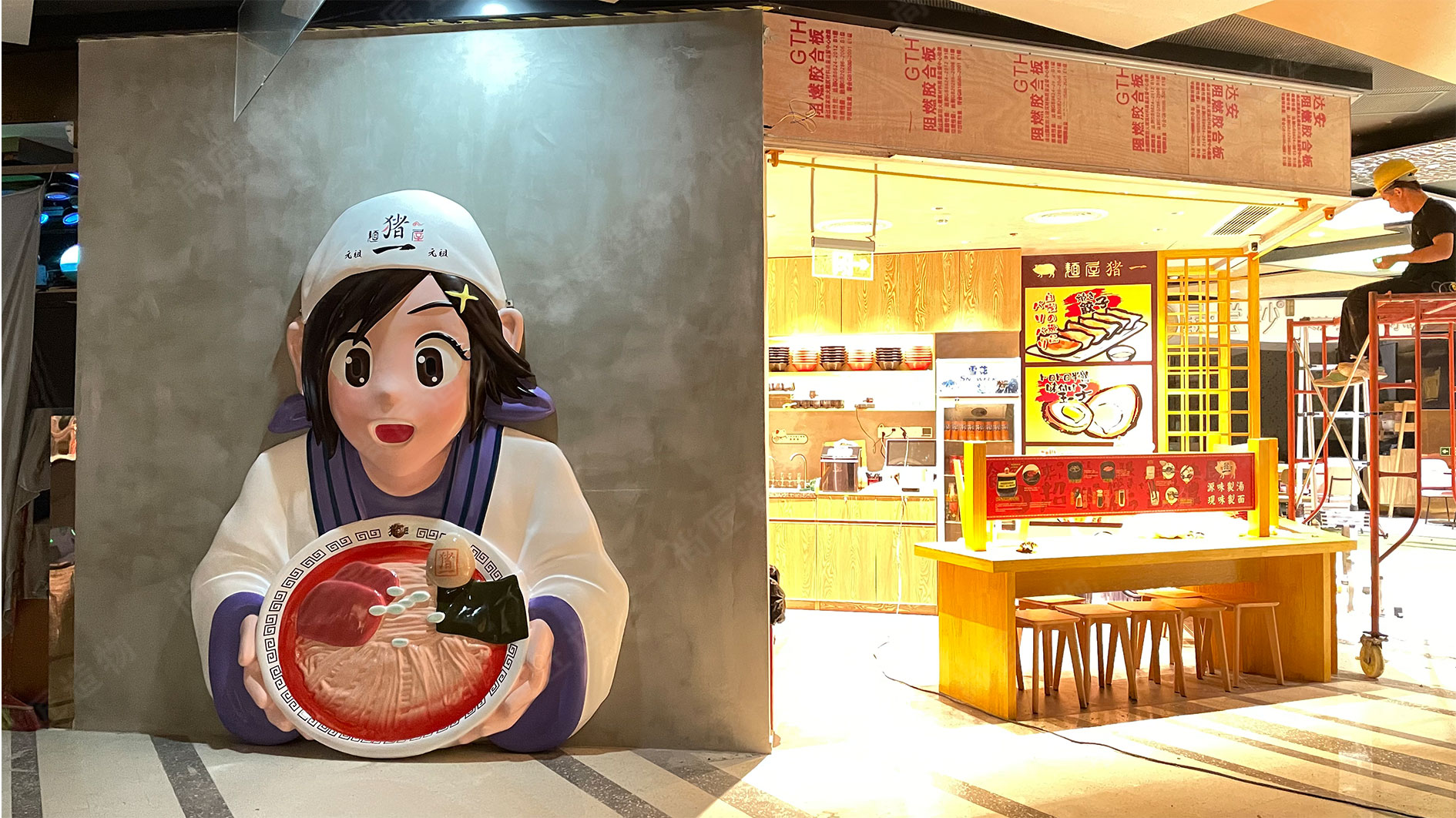
FRP Art Durability and Maintenance
FRP sculptures combine lasting resilience with practical upkeep requirements, making them ideal for both indoor and outdoor installations. Unlike traditional bronze, fiber-reinforced plastic resists corrosion from moisture, UV exposure, and temperature fluctuations, maintaining structural integrity for decades. This durability stems from its layered composition: a weather-resistant gel coat surface protects the reinforced fiberglass core, preventing cracks or warping even in harsh climates. For example, coastal installations benefit from FRP’s immunity to saltwater damage—a common issue for metal sculptures.
Maintenance is straightforward, requiring minimal effort compared to bronze’s polishing needs. Routine cleaning with mild soap and water removes dirt, while occasional waxing preserves the surface’s luster. Unlike porous materials, FRP doesn’t trap moisture, reducing risks of mold or discoloration. For high-traffic areas like hotels or museums, its scratch-resistant finish ensures artworks remain visually intact despite frequent handling. Protective coatings can be reapplied every 5–10 years to address minor wear, offering a cost-effective alternative to bronze restoration. By balancing longevity with low upkeep, FRP allows curators and designers to focus on aesthetic impact rather than preservation challenges.
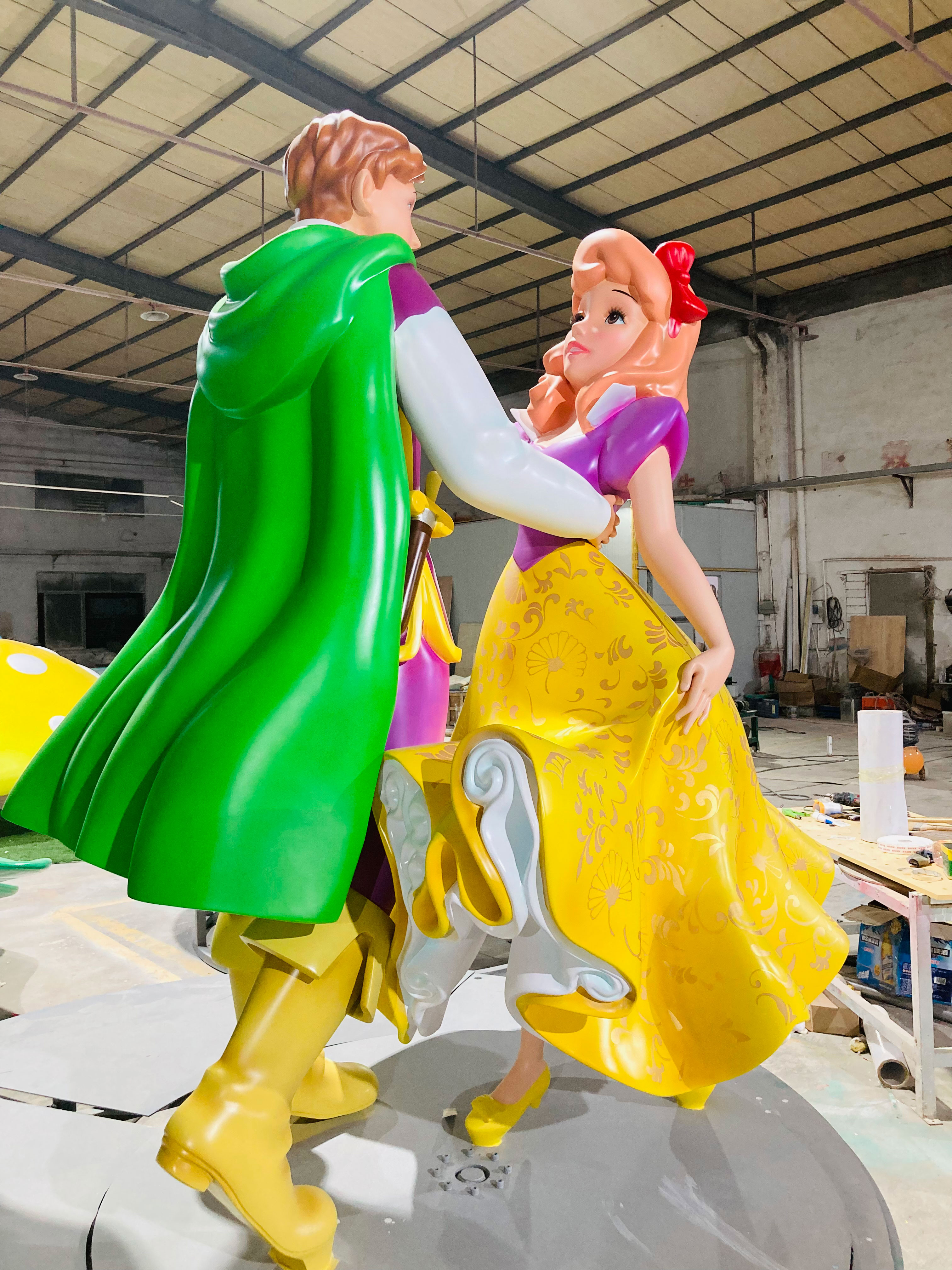
Bronze-Like Aesthetics in Modern Design
FRP sculptures have redefined how designers achieve the timeless elegance of bronze in contemporary spaces. While traditional bronze carries historical gravitas, its weight, cost, and maintenance challenges often clash with modern architectural demands. FRP’s adaptable resin composition allows artists to replicate intricate bronze textures—from weathered patinas to polished metallic finishes—with remarkable precision. This mimicry extends beyond visual appeal: surfaces can be engineered to mimic bronze’s cool tactile feel, ensuring authenticity without compromising on practicality.
Architects increasingly favor FRP for projects requiring both aesthetic grandeur and functional adaptability. In hotel lobbies or corporate atriums, these sculptures introduce classical sophistication into minimalist or futuristic designs, bridging eras without overwhelming the space. The material’s lightweight nature also enables larger installations in areas where bronze would require structural reinforcements. Additionally, FRP’s resistance to corrosion ensures that these pieces retain their luster in outdoor plazas or high-traffic indoor settings, addressing a key pain point in urban design.
By merging artisanal craftsmanship with advanced polymer technology, FRP sculptures offer a sustainable alternative for preserving bronze’s legacy in an era prioritizing efficiency and innovation.
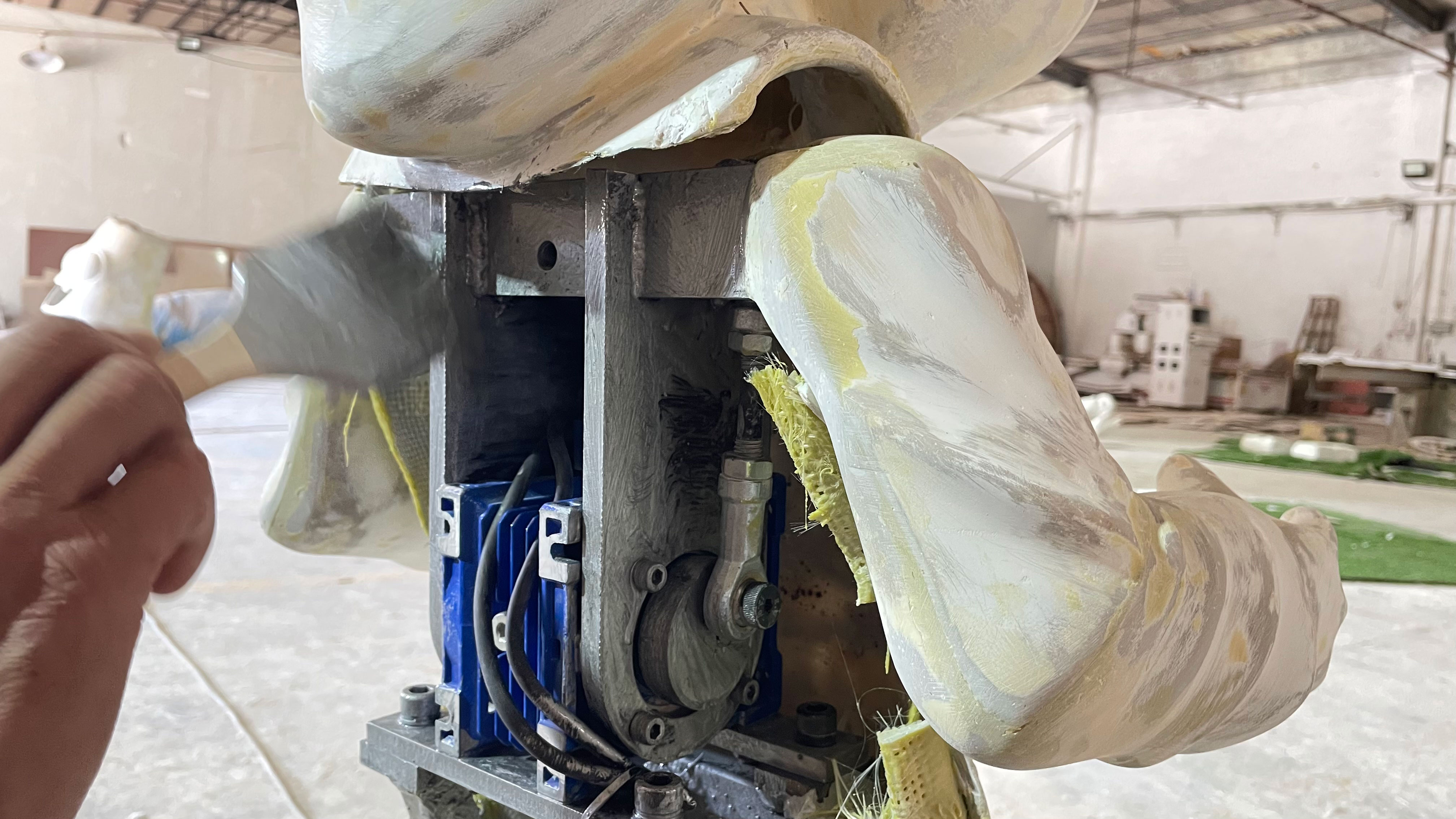
Conclusion
FRP sculptures represent a pivotal shift in how artistic expression intersects with modern engineering. By blending the visual richness of traditional bronze with advanced polymer technology, these creations address evolving demands across public and private spaces. Their reduced weight allows for dynamic installations in areas where heavy materials would be impractical, while the inherent durability ensures artworks withstand environmental stressors from weather to frequent public interaction.
This material innovation doesn’t merely replicate classical aesthetics—it expands possibilities. Architects now integrate larger-than-life pieces into hotel lobbies without structural reinforcements, and museums safely display tactile-friendly works that invite closer engagement. The adaptability of fiber-reinforced plastic also supports intricate detailing, ensuring that artistic vision isn’t compromised by technical limitations.
As sustainability and functionality grow priorities in design, FRP sculptures exemplify how art can harmonize aesthetic tradition with contemporary needs. Their continued adoption signals not just a trend, but a redefinition of permanence and accessibility in three-dimensional art.
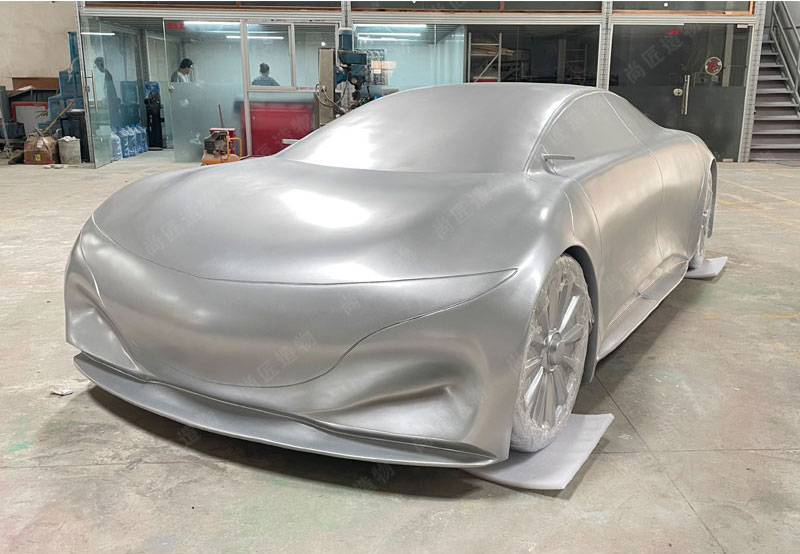
Frequently Asked Questions
What materials are used in FRP sculptures?
FRP sculptures combine fiberglass-reinforced plastic (a polymer matrix) with layers of glass fibers. This composite creates a lightweight yet sturdy structure, often coated with bronze-like finishes for aesthetic appeal.
How does FRP compare to bronze in terms of cost?
While bronze requires expensive metalcasting, FRP uses molds and resin, reducing production costs by up to 60%. Maintenance expenses are also lower due to FRP’s resistance to corrosion.
Can FRP sculptures withstand outdoor conditions?
Yes. The material is UV-resistant and weatherproof, making it ideal for gardens, public spaces, and coastal areas. A protective gel coat further shields against fading or cracking.
Why are museums choosing FRP over traditional materials?
FRP’s touch-friendly surface minimizes wear from handling, preserving details longer. Its lighter weight also simplifies installation and reduces structural stress on older buildings.
Do FRP sculptures require special maintenance?
Routine cleaning with mild soap and water suffices. Inspections for chips or cracks every 2–3 years ensure longevity, with repairs easily done using matching resin compounds.
Are FRP designs customizable for hotels or resorts?
Absolutely. Artists can scale designs from intricate motifs to large installations. The material’s adaptability supports themes ranging from classical elegance to modern abstract forms.
How realistic is the bronze appearance on FRP?
Advanced patina techniques and metallic coatings replicate bronze’s texture and sheen. At a distance, even experts struggle to distinguish high-quality FRP from genuine metal.
 ch
ch English
English






